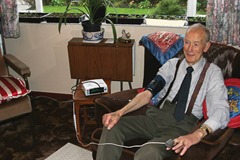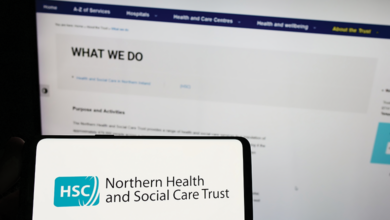Technology and innovation in health
 Michael McKernan assesses the role that technology can play in reducing costs and improving care as the population grows older.
Michael McKernan assesses the role that technology can play in reducing costs and improving care as the population grows older.
Many people, when asked about technology and innovation in the health sector, usually think of medical research and new drugs and inventions that lead to better treatment of disease. And of course, they are right. Medical research is the only way toward new cures and those wonder-drugs that can transform, and even save, lives but nowadays technology and innovation in health has a much wider meaning.
The part of it that more people are getting excited about is the innovation that can transform not only medicine but how healthcare is actually delivered to patients.
For governments, healthcare is vastly expensive. In 2008, in OECD countries alone, health spending was running at over $4.6 trillion per annum and generally rising in most member countries as a share of national GDP. In Northern Ireland, health spending is around £5 billion annually and rising. Therefore anything that can deliver services at lower cost is capable of freeing up very substantial amounts of money.
One of the most expensive healthcare delivery channels is in-patient care in hospitals. With people living longer, an aging population, and growing societal health problems such as obesity and addiction all making ever-increasing demands on hospitals, the established delivery models are no longer sustainable.
There would simply not be enough hospital beds to meet demand under conventional management models. And there would never be enough money available to build and run the number of new hospitals that would be needed to meet future requirements under the established healthcare system.
This is where technology and innovation comes in – making it possible to monitor, manage and treat patients in their homes or at an alternative primary care centre, leaving costly and scarce hospital beds to those who really need them. For many patients, new technology can deliver a better service at a lower cost.
Although there is massive research and development work under way to develop the technologies that can transform health and social care delivery, some of the new technical innovations already have a foothold.
Telehealth
There is already a growing take-up of telehealth, particularly suited to the elderly and patients with long-term illnesses. At its simplest, patients can take their own measures and vital signs and ring them in to their doctors on a regular basis or if and when there may be a cause for concern. Better than that, patients can be furnished with appropriate sensors that will automatically allow remote monitoring of vital signs by doctors without patients having to do very much. Doctors then only have to see patients in hospital when there is a problem.
And technology and innovation are already transforming the administration of health and, in particular, information management. Hospital and patient records have all migrated to electronic platforms and the big challenge now is to facilitate information sharing so that all required knowledge is available to health professionals wherever the patient interface occurs in an increasingly dispersed health structure. Clearly confidentiality and data protection issues have to be overcome, including the need in many instances to allow data to cross national boundaries.
For the patients of tomorrow, it will be vital that health information is simultaneously at the fingertips of GPs, hospital departments, consultants, primary care centres and social care providers so that integrated packages can be delivered with maximum efficiency. And the processing and management of prescriptions is already undergoing transformation.
Nonetheless, there is a long way to go in health innovation and delivering the patient-friendly technology that can transform delivery.
Research
Governments and businesses share in their enthusiasm for health innovation. For governments, it can be the key to better healthcare for citizens within a financial envelope which governments of the future will be able to afford. For businesses, there is rapid growth potential in the sector and the rewards that go with high added-value innovation.
And there is no doubt that governments are giving business every encouragement. In Europe, health sector R&D and innovation commands a key funding stream within the EU’s £70 billion Horizon 2020 innovation support programme. In Britain, the Technology Strategy Board has made hundreds of millions of pounds available for healthcare research which it sees as a ‘priority area’.
Typically, the strategy board is seeking to fund businesses to research into technologies that can deliver in areas such as:
• disease prevention, detection and diagnosis;
• management of chronic conditions; and
• treatments tailored to individual patients producing better outcomes.
Substantial health innovation funding is going into fields such as sensor technology, diagnostics, cell therapy, assisted living technologies, mobile devices, advanced materials and tissue engineering to name a few – and exciting results are anticipated in the years ahead.
In the world of health innovation, Northern Ireland has not just been standing idly by. Innovation in the sector is not only being encouraged by the Department of Health, Social Services and Public Safety but also supported by the Department of Enterprise, Trade and Investment and Invest NI as a major potential contributor to economic growth.
In September 2013, Enterprise, Trade and Investment Minister Arlene Foster launched a new £7 million Connected Health Innovation centre at the University of Ulster aimed at stimulating health sector innovation through cross-sectoral partnership.
In October 2013, the First and deputy First Ministers also included health innovation in their schedule when visiting the United States when they promoted Northern Ireland’s healthcare sector at the EU-US Connected Health Conference in Boston.
Last month, Health Minister Edwin Poots travelled to the US to forge a “ground-breaking” collaboration network with the New York Health Department. The Minister said that the collaboration with New York around interoperable electronic care records would bring international best practice to Northern Ireland.
Poots said: “Not only will this benefit patients and clinicians, but it will help academics, researchers and entrepreneurs develop the new innovations which will boost our economy.” The Minister also took the opportunity to attend the New York eHealth Collaborative Digital Health Conference while in the city.






